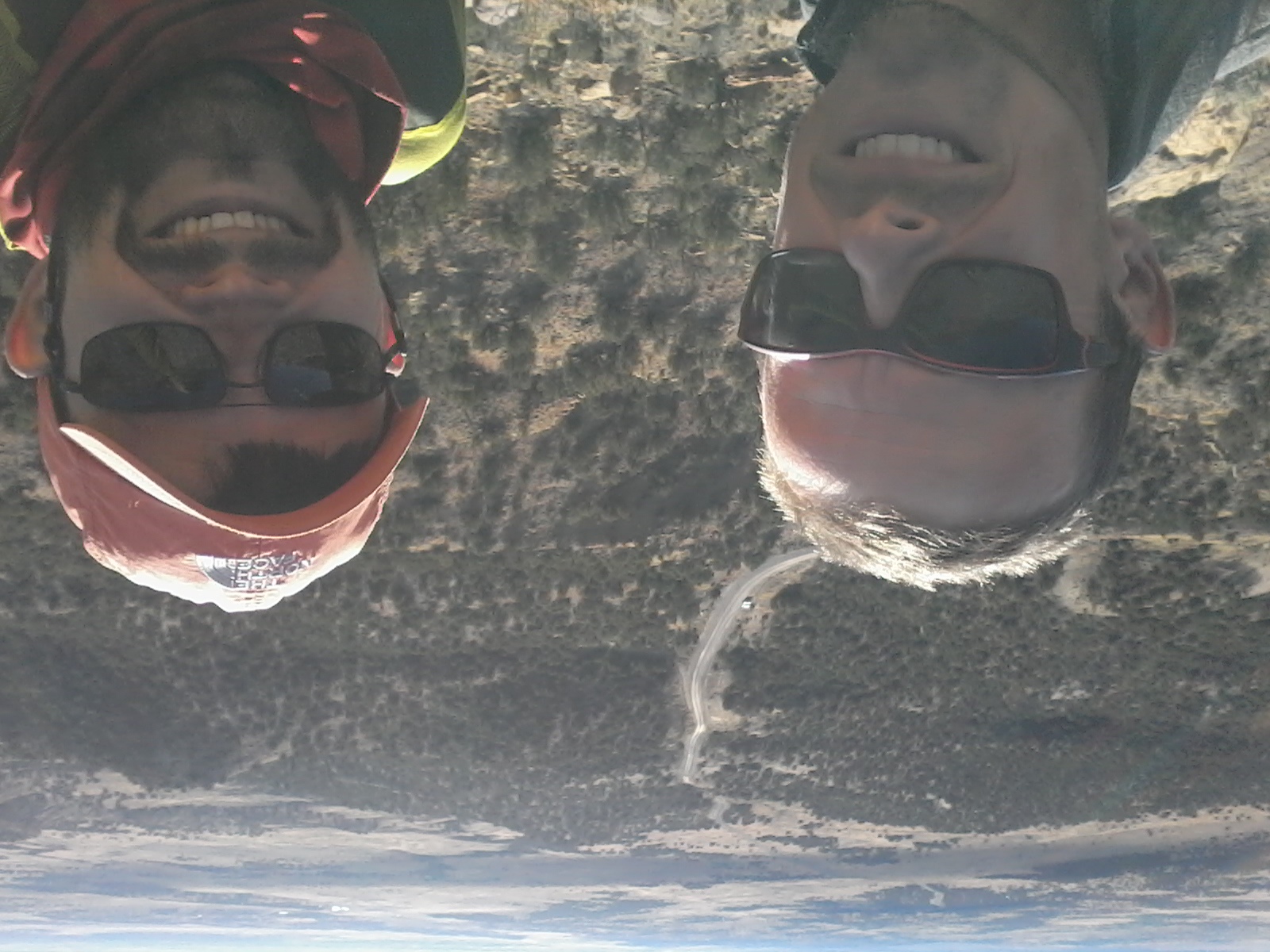Scattered exposures of Cretaceous sediments in remote portions of western New Mexico include the muddy slopes and cliff-forming sandstones of the Moreno Hill Formation. Extensive river systems carried both eroded mountains and volcanic ash easterly to north easterly to an enormous continental seaway teeming with life linking the Arctic Circle to the Gulf of Mexico. This particular sea life included the now extinct ammonite, similar to a modern day squid. Based on the occurrence of several particular ammonites in adjacent deposits, geo- and paleoscientists have long suspected the Moreno Hill river system and adjoining floodplain to have flowed between 92 and 90 million years ago. Therefore, any terrestrial fossils found within the Moreno Hill Formation, including the forerunners of dinosaurs such as Tyrannosaurus and Triceratops were thought to be of similar age. However, no-one knew exactly when this river flowed or how it changed over time in response to high sea levels to the east and northeast, along with earthquakes and actively erupting volcanoes to the west. Fortuitously, these particular river sands include volcanic minerals called zircons that contain uranium and lead radioisotopes, amongst others. These isotopes can (almost like with radio-carbon dating) be studied to determine the exact age of when a zircon crystal formed as it was ejected out of a volcano.

Mr C Cilliers and his supervisor Dr R Tucker during field work (credit C Cilliers)
We collected zircons from the lower, middle, and upper portions of the Moreno Hill Formation and analysed them using methods including Laser Ablation-Inductively Coupled Plasma-Mass Spectrometry (LA-ICP-MS) and Chemical Abrasion Isotope Dilution Thermal Ionization Mass Spectrometry (CA-TIMS). We were also able to determine that the river first started depositing sand in its channels and mud on its banks 90.9 million years ago. This tells us that the Moreno Hill Formation and its dinosaurs are about a million years younger than what the ammonite-ages foretold! For another 2.4 million years the river flowed from the same highland source areas, but this changed towards 88.6 million years before present. Our results not only provide better time points in earth's history for when this river flowed, but also show which volcanic regions the zircons had most probably come from, including the westerly lying Cordilleran Magmatic Arc and Sevier Highlands and the Mogollon Highlands to the southwest. We interpret that a shift to more northerly drainage patterns after 88.6 million years before present resulted in diminished Cordilleran and Sevier Highlands zircons in our upper Moreno Hill Formation sample. This data will allow geologists and palaeontologists alike to better compare similar ecosystems alongside this expansive continental seaway during this cryptic period in earth's history.
How to cite this article: Cilliers CD, Tucker RT, Crowley JL, Zanno LE. 2021. Age constraint for the Moreno Hill Formation (Zuni Basin) by CA-TIMS and LA-ICP-MS detrital zircon geochronology. PeerJ 9:e10948. DOI 10.7717/peerj.10948

Charl working a dinosaur
quarry in the Moreno Hill Formation with the North Carolina Museum of Natural
Science
(credit Dr R Tucker)

